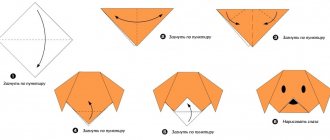Methodology for early detection of dyslexia according to A.N. Kornev
In 1982, a method for early detection of dyslexia according to A.N. was proposed. Kornev (MRVD), developed as part of a dissertation research for the degree of candidate of pedagogical sciences and recommended in the Letter of the Ministry of Health of the USSR. Based on a neuropsychological analysis of children with signs of dyslexia, a group of tasks has been developed that can differentiate manifestations of dyslexia from other forms of retardation, for example, mental retardation, pedagogical neglect. Diagnostics is aimed at children of senior preschool and primary school age (6-7 years). The purpose of the study is to detect signs of inferiority of obsessive operations in various modalities.
Methods for early detection of dyslexia
includes 4 types of tasks described in the books of the author of the method.
Row speaking
The child is asked to utter an automated speech sequence, naming the seasons in order. It is acceptable to offer a hint at the beginning of the task if the child confuses the seasons with months, parts of the day or days of the week. It is not knowledge itself that is assessed, but the ability to reproduce automated enumeration in order in the correct sequence. If errors occur, the child is asked to complete the task again to eliminate accidental errors. Then the child is asked to list the days of the week.
Each violation of automated pronunciation is assessed with “penalty” points as follows:
- correct answers to both questions - 0 points;
- correct answer to 1 question - 2 points;
- no correct answer - 3 points.
Direct and reverse repetition of numbers
The child is asked to repeat after the researcher several numbers in the same order. The numbers are called at a moderate pace, as when counting the starting time. Accelerating the tempo makes it easier to memorize and, accordingly, distorts the result. If you make a mistake, you are given the right to a second try. RAM must maintain the order of digits of a certain length.
The second task is to reversely reproduce the given order of numbers. An example is provided throughout the explanation to ensure a confident understanding of the assignment. The length of the order of digits in this case is less than in the first task.
It is necessary to gradually increase the length of the digital series in order to determine in both cases the length of the memorized series, reproduced in the forward and reverse directions. To evaluate, the length of both rows (that is, the number of memorized digits) is summed up.
The assessment is made as follows:
- more than 6 words – 0 points;
- 6 words – 2 points;
- less than 6 words – 3 points.
It should be noted that counting backwards better characterizes the amount of RAM, since the child must fix the direct digital series, sequentially inverting it.
Playing rhythms
The child is asked to reproduce four rhythmic patterns in sequence. First, simple rhythms are presented, and the right to repeat is given if a single mistake is made. Then two complex rhythms are presented while maintaining the criteria for completing the task.
At the same time, the ability of auditory discrimination of rhythms and auditory gnosis of rhythmic complexes are assessed. It is possible that the task may be distorted due to a defect in dynamic praxis, when the child makes an “extra” blow, which is explained by impaired motor skills.
The assessment is made as follows:
- 4 rhythmic rows are reproduced – 0 points;
- 2 rhythmic series are reproduced, consisting of no more than four beats each – 2 points;
- not a single rhythmic series is reproduced - 3 points.
"Fist-rib-palm"
The child is asked to carefully monitor the researcher’s actions and repeat them three times in the same sequence. You hit the table with your fist, place your palm on the edge and clap your palm on the table three times in a row, without pauses between series.
If there is a single error, the right to re-execute the task is granted. If obvious mistakes are made, the demonstration of the task is repeated. No more than five demonstrations are allowed.
This task is similar to the neuropsychological test "fist-rib-palm", but the movements are performed differently. Neuropsychological testing evaluates dynamic praxis, that is, the ability to switch from one movement to another. When diagnosing the risk of dyslexia, the ability to correctly reproduce a certain sequence is examined.
Assessment of task completion is carried out as follows:
- correct reproduction after one or two attempts after the 1st demonstration - 0 points;
- correct reproduction after 2 demonstrations or after 3 demonstrations on the 1st attempt - 2 points;
- correct reproduction after 4 and 5 demonstrations or after 3 demonstrations from the 2nd or 1 more attempts, lack of correct reproduction—3 points.
Final assessment of the Early Dyslexia Assessment
The final assessment according to the method of early detection of dyslexia is made by summing the results of the first, second and worst result when performing the third or fourth task (result with the maximum number of penalty points).
The total amount of penalty points consists of the results of the assessment of series speaking, repetition of number series and reproduction of rhythms or sequences of actions.
Final assessment of MRVD:
- up to 5 points inclusive – normal, there is no risk of developing dyslexia;
- more than 5 points – there is a risk of developing dyslexia. The more penalty points, the higher the risk of developing dyslexia.
Alexander Nikolaevich Kornev , Doctor of Psychology, Head of the Department of Logopathology at the St. Petersburg State Pediatric Medical University of the Ministry of Health of Russia, author of the Slogy method, spoke about how children develop reading skills and why years of work are needed to overcome dyslexia. Alexander Nikolaevich’s report was made at the scientific and practical online conference “School Difficulties: Strategies for Helping Children,” which took place as part of the II International Awareness Week on Dyslexia and Other Learning Difficulties.
Many parents dream of a “magic pill” that would save their child from dyslexia. When working with parents, I often feel that they really want to get some kind of quick-acting remedy. The emergence of such desires is understandable. But it’s unlikely to justify them. The capabilities of our brain are, of course, gigantic, but they also have certain limits.
The paradox is that none of the same parents will believe it if they are offered a “miracle method” with the help of which a child will master the entire primary school course in six months. Everyone has long understood that education is a long process: first you have to study for four years in primary school, then continue in secondary school, and this is normal. But for some reason, when it comes to learning to read, and in the conditions of special difficulties that exist for children with dyslexia, such a dream is alive and well. And this is taken advantage of by clever marketers, and simply put, by scammers. This is exactly what they are speculating on, offering absolutely fantastic methods that no professional, of course, would ever believe in. But parents who don’t know much (and sometimes know nothing at all) about the mechanisms of learning skills are ready to believe it.
To explain why such miracles do not happen, let's start from afar. Let's start with how the process of mastering literacy normally occurs. This is a multi-stage process, which for Russian children, for example, begins in preschool age. Although no one has officially charged kindergartens with teaching children to read and write, this is happening nonetheless. Many parents take their children to early development centers; most kindergartens develop in children preliminary knowledge and skills, without which they cannot master literacy. This stage is called propaedeutic: the child, before learning letters, must first recognize language as a separate substance, distinct from the objective world.
While learning to read and write, a child masters a new system of signs, in fact, a new language - a graphic code of oral speech, which he already uses.
Therefore, to begin with, the child must understand, realize that the speech he uses every day is something special. However, up to a certain age (up to about 4 years), children consider a word to be a sign of an object and treat it that way. Some even ask questions such as: “How did you know that the Moon is called Luna? She’s so far from us.” Also Soviet psychologists S.N. Karpov and I.N. Kolobova, in experiments with renaming, were convinced that children 4.5–5 years old are indeed sure that a word is a sign denoting an object. And only later do children master the skills of isolating words from a stream of speech, dividing a word into segments - syllables and sounds. It is especially important that this process is competently supervised by specialists: then children easily understand that discrete individual units are sounds denoted by letters. That is, children are not taught to name letters (as parents sometimes do and thereby spoil the normal course of this process) - they are explained how letters can represent sounds. The only correct way is to go from the sound structure of the word, from sound to letter, but not vice versa. All this takes a lot of time. On average, the entire process of mastering the alphabet lasts from 6 to 12 months. And for children with problems, such as dyslexia, it lasts even longer - often a year or more. Often, already in grades 2–3, children with dyslexia still cannot fully master these skills.
Next, children move on to the alphabetic period - they begin to master sound-letter connections. This process is also slow - depending on the child’s abilities and the methodology, it lasts from six months to a year. The child needs this time in order to remember which letters represent certain sounds and to firmly grasp this (that is, to automate these connections).
Then the next stage begins (sometimes these stages partially overlap or proceed in parallel): the skill of syllable merging occurs. This is especially important in Russian writing. At the initial stage, the syllable is the basic unit in reading. Dividing a word into syllables is the simplest type of analysis, because a syllable, as is known, is the minimum pronunciation unit. But this stage also takes from a year to a year and a half. According to our longitudinal study, it is impossible to go from basic reading to reading whole words in less than a year.
And finally comes the long, long stage of mastering strategies for semantic text analysis. Scientists around the world, including our laboratory, have been studying the mechanisms for mastering this process for many years. It is actually a long journey, lasting 5-7 years after the end of primary school. Why is it so long? Why is this taking so long?
Data obtained by scientists studying the brain using neuroimaging methods have greatly changed our understanding of the functioning of the reading brain. It turned out that all the exercises that a child, while mastering literacy, performs under the guidance of teachers, a speech therapist, or even independently, ultimately create new systems of connections in the brain, new functional systems, new synapses, new pathways, dendrites. That is, in fact (and this is not just a metaphor) a teacher, a speech therapist, in some sense, is the architect of the development of brain support for reading. I would say the same about a neuropsychologist working with a patient with aphasia. The plasticity of the brain, its ability to restructure itself, for example, in the event of damage, thanks to rehabilitation exercises and neuropsychological methods of restoring functions, has been clearly confirmed by numerous observations and experiments. In other words, the entire time the child is practicing, trying to read, improving his skills, his brain is being rebuilt. After all, the fact is that nature has not created brain structures specifically designed for literacy, so we have to use those structures that are genetically designed to serve slightly different functions. That is, during training, they undergo a kind of reconfiguration, and there is a lot of evidence-based scientific data on this matter. Obviously, this is a very serious long-term work and the brain cannot do it instantly, so the process of mastering literacy is not quick. A perfect skill at the brain level is a collection of different neural networks, subsystems (interconnected neurons), located in different parts of the brain. These changes, alas, cannot be carried out instantly or in six months (and some even in a year).
There are general patterns that create certain time limits. Scientists, in particular N.A. Bernstein , have long proven that the assimilation of any skill (both motor and mental), as a rule, occurs in two stages: first it is formed under the control of consciousness, with great expenditure of energy and effort, and then gradually, with exercise, it occurs consolidation and automation. The final result of a fully formed skill is its automation. Most speech therapists know this as a law, mandatory for the formation of speech skills. Often, for children with problems, the automation stage can be delayed and proceed much more slowly than for everyone else.
In different types of writing, the processes of mastering literacy proceed slightly differently. For example, the stage of mastering the skills of syllabification for Russian writing is especially important (compared, for example, with English writing). Therefore, Western methods of developing reading are not directly applicable to Russian writing. Without knowing this, some parents of children with dyslexia hope for success from using Western methods. But such methods were created based on the laws of the English language and writing; they are unsuitable for Russian children. Even if the technique works well in the Western educational system (for example, in an English-speaking country), it cannot be applied to the Russian language. I have seen promising advertising claims that guarantee success from the use of English-language techniques. But in reality this is impossible.
All of the above stages in mastering writing and reading skills, of course, take time. And by magic, no matter how much the parents want it, it is impossible to speed up this process without compromising the result. If they still try to do this, then in the end the house, figuratively speaking, turns out to be built on sand: by forcing the process too much, you can get a raw, non-automated skill that has not been brought to full consolidation, which will then simply be lost. This is the most typical example of what teachers call pedagogical neglect. If the teacher does not control the strengthening and automation of the reading skill, if he speeds up the rate of complication of the material, a disaster occurs for some children.
Underdeveloped skills accumulate like a snowball, and in the end the child seems to hit a wall.
He cannot learn the next most difficult skill because the previous ones fell apart because they were not automated. In other words, we need a principle of automation control: on the one hand, psychological, and on the other, didactic.
Children with dyslexia have many difficulties associated with incomplete acquisition of certain prerequisite skills. There are many of them, but we can name three main difficulties that these children face. Firstly, the formation of sound-letter connections is too slow; True, this difficulty does not arise for everyone; it is characteristic of the dysphasic form of dyslexia, which I described in my book. But the next difficulty arises for all dyslexics: this is extremely slow progress in mastering syllable fusion, syllabic reading and, of course, reading whole words. This progress is so slow that some children, even by the end of school, cannot cope with syllable combinations. This is a truly difficult, time-consuming process, and this is a compelling reason to sympathize with such children. They spend several times more effort on mastering literacy than all other children. They are often accused of laziness, of negligence, but in fact, if, figuratively speaking, you try to get into the skin of such a child, it becomes obvious how difficult it is for him to drag this cart. Conducting an eye-tracking study, we saw firsthand how much more mental operations such children perform when they need to read a word or sentence.
Our research, carried out quite a long time ago, has allowed us to create a multifactorial model of the mechanisms of dyslexia, which includes many different deficient, immature cognitive prerequisites that inhibit the development of skills. According to many scientists in Russia and other countries, it is very difficult to eliminate dyslexia; many believe that it is completely impossible to achieve this. In such children, some areas of the brain are not actively involved in the reading process. Areas of high activity of brain structures that are normally involved in the act of reading are much less involved in this process in children with dyslexia. In order to activate them, to create the necessary brain subsystems, numerous exercises that are repeated and continued for quite a long time are needed.
That is why scientists around the world are looking not only for methods of helping in traditional learning conditions, but are also making attempts to create alternative methods that would spare the weak functions of children with dyslexia, relying on more intact ones. For example, such alternative methods include global or semi-global methods.
We made a similar attempt many years ago. At first it was a candidate's dissertation, which attempted to study the mechanisms of dyslexia themselves. This then led to the creation of an alternative method of teaching reading that allowed children to bypass the most difficult component for them, that is, the skill of syllable fusion, and learn the entire syllable. To do this, a non-traditional approach is used - what is called implicit (or involuntary) acquisition. Research has shown that implicit learning is more intact in children - it is like a reserve resource that does not require conscious learning (which is especially difficult for such children). This technique has been tested for many years and applied to children with various forms of pathologies, not only to children with dyslexia, but also to children with mental retardation and speech underdevelopment.
On this basis, a digital version was developed, which is already online and available to everyone. It allows, on the basis of regular daily exercises (which are needed to enlarge reading units and automate them), to form reading skills in children with severe reading disabilities. Repeating exercises regularly, without leaving home, creates a very convenient opportunity to teach a child to read.
The program we created, among other things, also automatically individualizes the pace of introducing new material and the level of difficulty for each specific child. As a result, it is possible to do the most important thing (which, in fact, is a weak point for such children) - gradually gradually form and enlarge operational reading units. The technique allows you to form the most important prerequisites for reading: expand the amount of RAM for letters and syllables, form and develop skills in synthesizing words from phonological segments (for example, syllables), and syllable analysis skills. In addition, the program forms the most important prerequisite for reading and writing - short-term successive auditory-verbal memory (that is, memory for sequences, for rows). This function is actively used in all speech-related skills. Finally, visual attention and visual search are trained - and this is also the most important function that is always in demand in reading (similar exercises are even used in teaching speed reading to adults). In other words, this whole complex allows you to gradually achieve success. Experience shows that to achieve full results, a year or two is needed - this is the least, and in serious cases of dyslexia, sometimes it takes three or even four years. But as a result, it is really possible to achieve quite lasting results.
The ideal option is a combination of using the technique and simultaneously working with a speech therapist.
I cannot fail to mention how important it is also for parents to motivate the child, help support him, maintain enthusiasm, optimism, and psychologically support him.
Thus, the overall result is complex teamwork.
And returning to the question, are there methods that quickly get rid of dyslexia. Unfortunately, this cannot be answered positively. When some companies or individual specialists offer to change everything in a few months, to arrange everything so that the child will read, behind this lies a deception. So I appeal to parents: be careful. If you are promised quick success, then most likely this is a marketing trap. You will waste time, a lot of money, and ultimately the child will be the loser. Think about it, weigh everything I said. I believe that speech therapists, in turn, should help parents not fall into such a trap, explaining that it is impossible to fix everything so quickly, which means it is a deception. Any promises of fantastically fast results are actually fraud, for which, unfortunately, there are no penalties yet.
Other methods for assessing the risk of developing dyslexia in preschoolers
Consider a battery of risk tests implemented in other language settings as predictors of dyslexia. Partially, these tests can be used starting from 5 years of age, which distinguishes them favorably from the domestic methodology discussed above.
Rapid Serial Naming Test
The test was developed by an international group of experts and tested for different age groups. Beforehand, a training task is performed, during which the researcher must make sure that the child knows the necessary names. The normal execution time for each task is 1 minute.
Serial image naming
The child is offered stimulus material with a set of repeating pictures (36 images). The task consists of quickly naming the depicted objects out loud. Errors made and execution speed are taken into account.
Serial color naming
The child is offered stimulus material with a set of repeating colors, which he must name as quickly as possible.
Serial letter naming
The child is offered stimulus material with a set of repeated letters, which he must name as quickly as possible.
Prevention measures
An important component of prevention is competent planning of pregnancy, prevention of complications of pregnancy and childbirth, traumatic brain injuries during childbirth and in the future. This will prevent brain dysfunction, which is the main cause of dyslexia.
The next method of preventing dyslexia is to develop visuospatial functions, memory, attention, fine motor skills, and analytical abilities. You need to communicate more with your baby: in everyday life, during classes. The development of spoken language plays a big role in preventing and overcoming dyslexia. Learning songs, stories, poems will help improve writing and reading skills. Read books with discussion of what you read or listen to audio books.
It is important to exclude ophthalmological pathology and diseases of the hearing organ. Impaired auditory and visual perception can cause dyslexia.
Regular testing is recommended for children at risk. This will allow timely identification of speech disorders and begin their correction.




